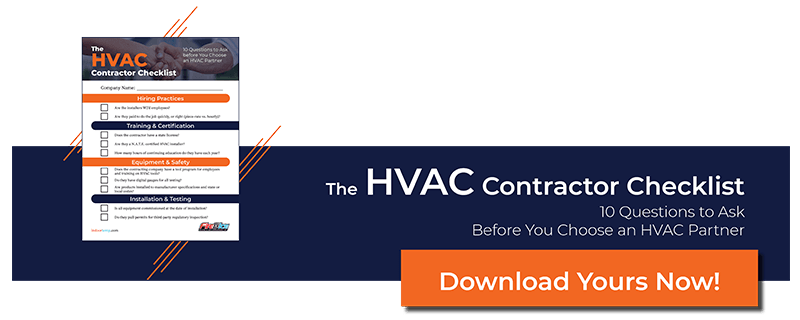It’s still a little rough out there for HVAC contractors — prices are up, workforce availability is shaky at best, and there’s so much new technology hitting the market that it’s nearly impossible to keep up. But the way to survive is to adapt, and that means that relying on “the way we’ve always done it” just isn’t going to cut it anymore. Operations need to be streamlined and new tools utilized. To help make sense of what needs to change and how, ACHR NEWS spoke with Jenny Benbrook, CEO and co-founder of Powerhouse Consulting Group. Benbrook has worked with contractors nationwide to streamline their tech stacks and reimagine workflows, helping businesses cut through the noise, audit the tools they already have, and implement smarter processes that actually drive ROI.
ACHR NEWS: Why do you think so many contractors stick with “the way we’ve always done it,” even when it isn’t working anymore?
Benbrook: Contractors are incredibly hardworking and focused on doing good work for their customers. That focus is admirable, but it often leaves little time or energy to step back and evaluate whether their internal processes are serving them well. Familiar systems feel safe, even if they’re inefficient. Meanwhile, change management can seem overwhelming, especially if it involves retraining staff or learning new technology. But the reality is, clinging to old ways usually costs more in the long run, whether it’s through lost revenue, wasted time, or frustrated employees.
ACHR NEWS: Many contractors already use platforms like ServiceTitan or FieldEdge. Where do you see them leaving ROI on the table?
Benbrook: Contractors who invest in field service management platforms like ServiceTitan or FieldEdge often find themselves leaving a considerable amount of ROI untapped. These tools are incredibly powerful, yet most companies only ever scratch the surface of what they can do. Implementation fatigue is one reason. Technology evolves at a rapid pace, with new features, product updates, and releases rolling out constantly. For most contractors, staying on top of these changes isn’t a full-time job, which means adoption rarely keeps up with innovation.
Another challenge is the lack of consistent systems and processes. Without standardized ways of using the software across teams, utilization becomes fragmented. This inconsistency prevents companies from fully leveraging the software’s capabilities and creates inefficiencies that ripple through the business. Contractors also tend to underutilize automation features. Many platforms offer powerful workflow automations, inventory, and integrations with marketing and sales tools, yet these are often overlooked. That’s lost opportunity for efficiency in the field, tighter lead management, and ultimately stronger conversions.
Finally, there’s the narrow approach to adoption. Most companies invest in these platforms to solve one or two immediate problems, such as scheduling or invoicing. While that alone can deliver value, these systems are designed to function holistically, connecting operations, finance, sales, and marketing. By not embracing the platform as a systemic solution, businesses miss out on the compounding benefits that come from fully integrated use. The result? A lot of power left sitting on the table. Companies may feel they’re “using the software,” but in reality, they’re only unlocking a fraction of its potential. The gap between basic adoption and full optimization is where the true ROI lives.
Looking for quick answers on air conditioning, heating and refrigeration topics?
Try Ask ACHR NEWS, our new smart AI search tool.
Ask ACHR NEWS
ACHR NEWS: How do you help companies decide whether to double down on existing software versus adding something new to the stack?
Benbrook: We start by auditing their business goals against the capabilities of their current tools. If their platform already has untapped features that can meet those needs, we help them maximize what they have before recommending anything new. Sometimes, though, there are clear gaps, such as advanced reporting, customer experience, or communication tools, that warrant adding another layer. The key is being intentional, not just piling on technology for the sake of it. It also comes down to determining the best fit — the Goldilocks effect. Some native tools within a platform may fall short of what a contractor truly needs. In those cases, an enhanced integration can elevate a particular workflow or customer experience. On the flip side, adding too many outside tools can create unnecessary complexity. The right balance is “just right”: not too limited, not too bloated. Ultimately, the guiding principle is simple: Always know the tools, and always know the business. Building a tech stack without strategy is setting yourself up for wasted profits. Every addition, or decision to double down, should be tied directly to the company’s goals, workflows, and long-term vision.
ACHR NEWS: In your experience, how quickly can companies see measurable results once they begin streamlining their operations?
Benbrook: It does not happen overnight. The best results come when companies start with one process and focus on mastering it before moving on to the next. The same is true for software: Start with one platform, learn it fully, and unlock all of its features before adding more layers. The first measurable results often come from finding low hanging fruit. Revenue producing tools and features — such as marketing, sales, and automation — tend to deliver quick wins. Improvements in these areas can show up in better lead conversion, faster follow-up, or stronger sales performance. Once those gains are in place, attention can shift to broader operational efficiencies that create long-term impact. Dispatching, reporting, and inventory processes may not show immediate financial results, but they create sustainable efficiencies that support growth. The overall pattern is compounding progress. Start with one area, prove the value, and then expand. In this way, contractors begin to see results quickly in focused areas, while building momentum for wider transformation across the business.
ACHR NEWS: Why is it important for contractors to focus on operational efficiency now, even during a busy season?
Benbrook: Busy seasons often expose the cracks in a company’s processes. If scheduling, dispatching, or communication is already strained, a flood of work can quickly overwhelm the team, erode customer experience, and create frustration for employees. By tightening operations now, contractors not only protect their reputation but also create capacity to take on more business without burning out their people. It’s also important to remember that technology is never static. Think of it like a human employee — it needs ongoing attention, training, and development to reach its full potential. Software evolves with new features and updates, and the process of refining how you use it should never stop. Contractors that continually “train” their technology alongside their teams are the ones best positioned to adapt, scale, and sustain growth long after the busy season ends.
Whether you require installation, repair, or maintenance, our technicians will assist you with top-quality service at any time of the day or night. Take comfort in knowing your indoor air quality is the best it can be with MOE heating & cooling services Ontario's solution for heating, air conditioning, and ventilation that’s cooler than the rest.
Contact us to schedule a visit. Our qualified team of technicians, are always ready to help you and guide you for heating and cooling issues. Weather you want to replace an old furnace or install a brand new air conditioner, we are here to help you. Our main office is at Kitchener but we can service most of Ontario's cities
Source link



